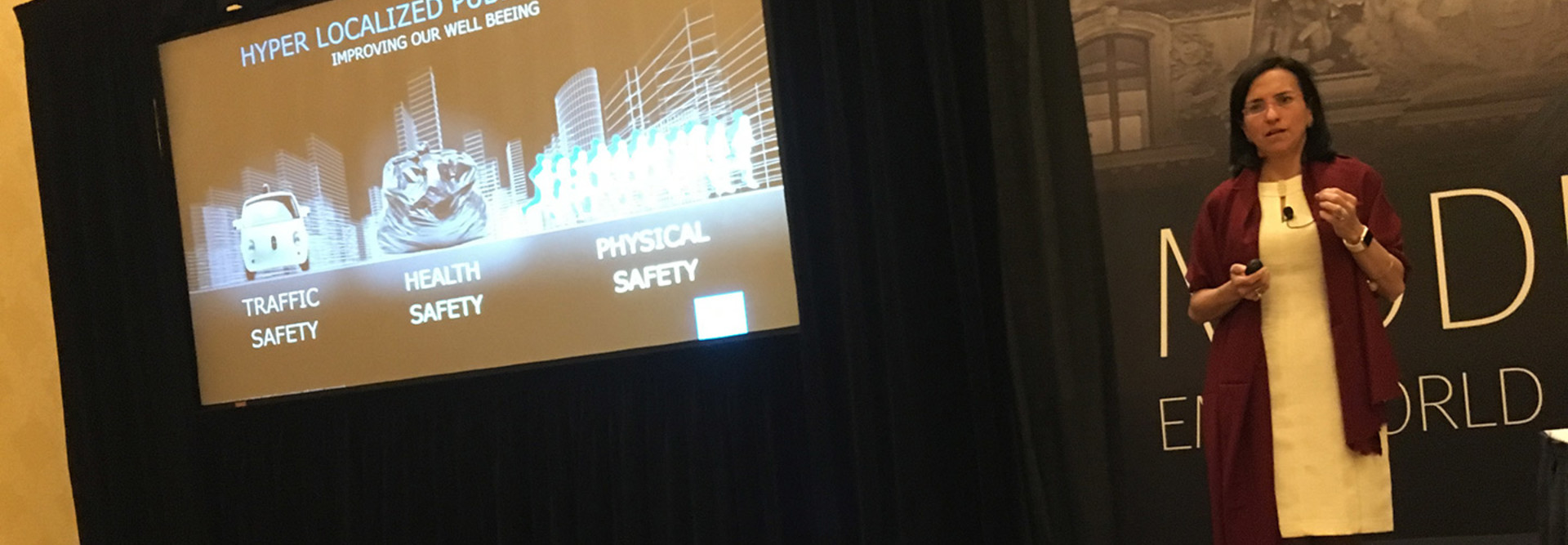EMC World 2016: Smart Cities Are a Platform for Innovation
You might not realize it, but there’s a villain who’s taken root in public-sector IT.
That villain is called the silo and Patricia Florissi, EMC VP and Global CTO for Sales, is determined to point him out.
“The biggest villain of IT is the silo villain. He showed up when we had the mainframe. He showed up when we had the applications and he showed up when we had virtualization,” said Florissi during her presentation of Smart Cities at the 2016 EMC World conference in Las Vegas.
State and local leaders in particular have succumbed to the “silo villain” as they’ve integrated new and emerging technologies in a manner that is piecemeal and not holistic.
“Every time you commit to something you become a victim of the silo villain,” said Florissi. “The market is responding to the mayor [by] giving [him] point solutions. ‘Mr. Mayor, you have a traffic problem, here’s an app for the traffic.’ And that application doesn’t talk to any other application in the world and you can’t build your big supply chain.”
Instead of thinking about individual problems that can be solved by very specific applications, Florissi urges city leaders to think big picture and build for the future, not just the present. To build anything long-term, localities must think of Smart Cities as a platform that is flexible, open, scalable and efficient.
“Mr. Mayor, what you actually need is a platform. And that platform needs to be the same across all the public agencies because you have 20 million silos,” said Florissi during Day 2 of the conference.
Cities Must Tap Innovation on All Fronts
Cities have many challenges that they must confront. In many cases, city leaders are burdened with aging physical infrastructure, increased demand for services and limited resources.
Drawing on history, Florissi points out that public-private partnerships have long been a key component of generating progress in the public sector. Some of the major roads that citizens rely on today for daily travel, for example, started out as private toll roads, which helped keep those roads from being exclusively government-funded projects.
“When government cannot sponsor, who chips in? The private sector,” she said.
Aside from turning to public-private partnerships for creative funding solutions to modernize cities, local and municipal leaders need to think about generating data and value from every corner of their cities. This includes public parking, traffic signals and garbage collection. Sensors can be placed everywhere, and with data analytics tools at their disposal, cities can make informed decisions about trash pickup routes, for example.
One of the innovative examples Florissi shared with the audience was how the city of Amsterdam has increased the value of its sidewalks by turning half of them into “energy generators” by outfitting them with solar panels.
Most people think that the most expensive part of solar energy has to do with capturing that energy, but that’s not true, Florissi said. The most expensive part of alternative energy generation lies in storing that energy once it’s captured. Which is why Florissi thinks cities should consider using alternative energy as a primary source and stop tapping the electric grid when it’s not needed.
“There’s absolutely no need for any streetlight to ever come out of the [electric] grid again,” she said.
Planning for Cities of the Future
The potential for improvements in city administration and life are endless. City Hall must be a key stakeholder in driving this shift and it requires state and local leaders to realize the increased value and role that technology will play in building the cities of tomorrow.
“We’re going to live in a seamless world. Everything we touch won’t be the same thing anymore,” said Florissi. “Everything is going to be differentiated and personalized.”
That means citizen services need to be open, mobile-friendly, accessible and user-friendly.
“Digital cities are a movement to take you from the cave time to the modern time, offering you care, comfort, choice and convenience,” said Florissi.









